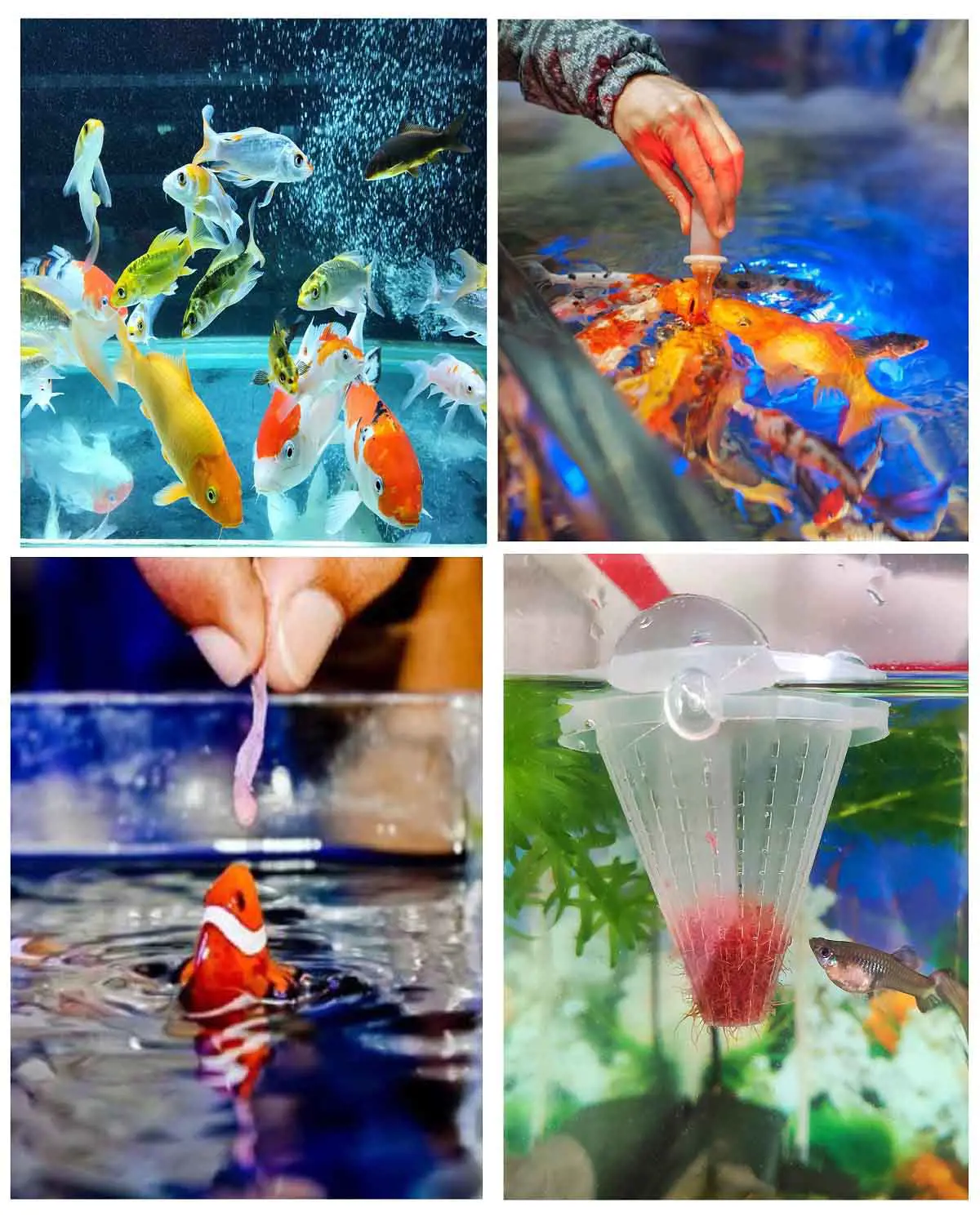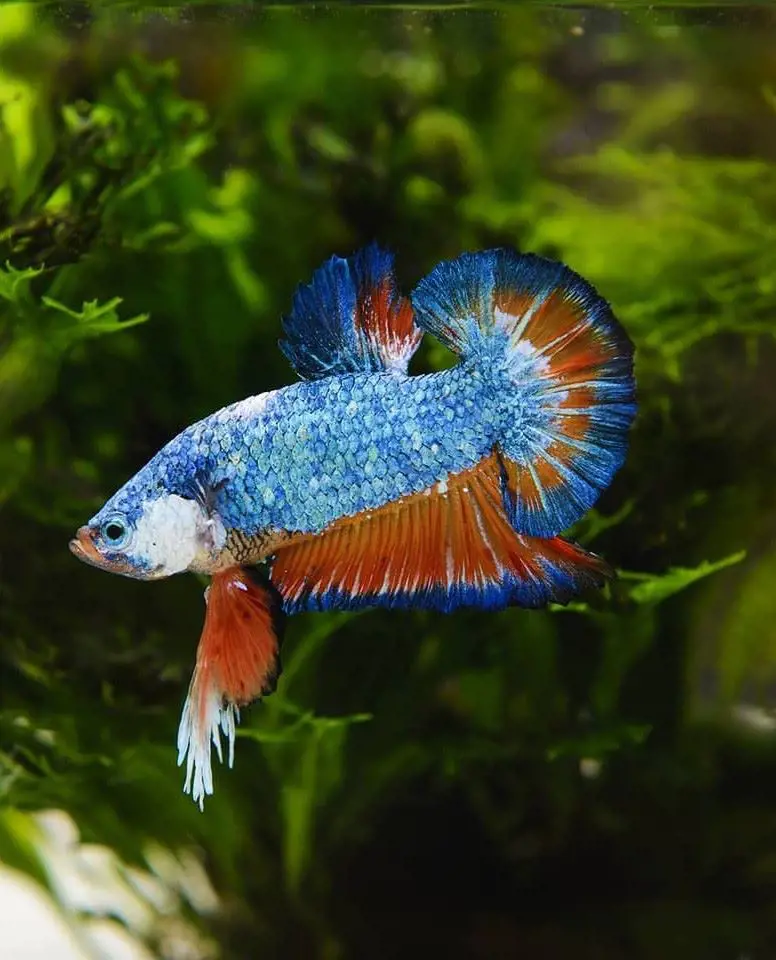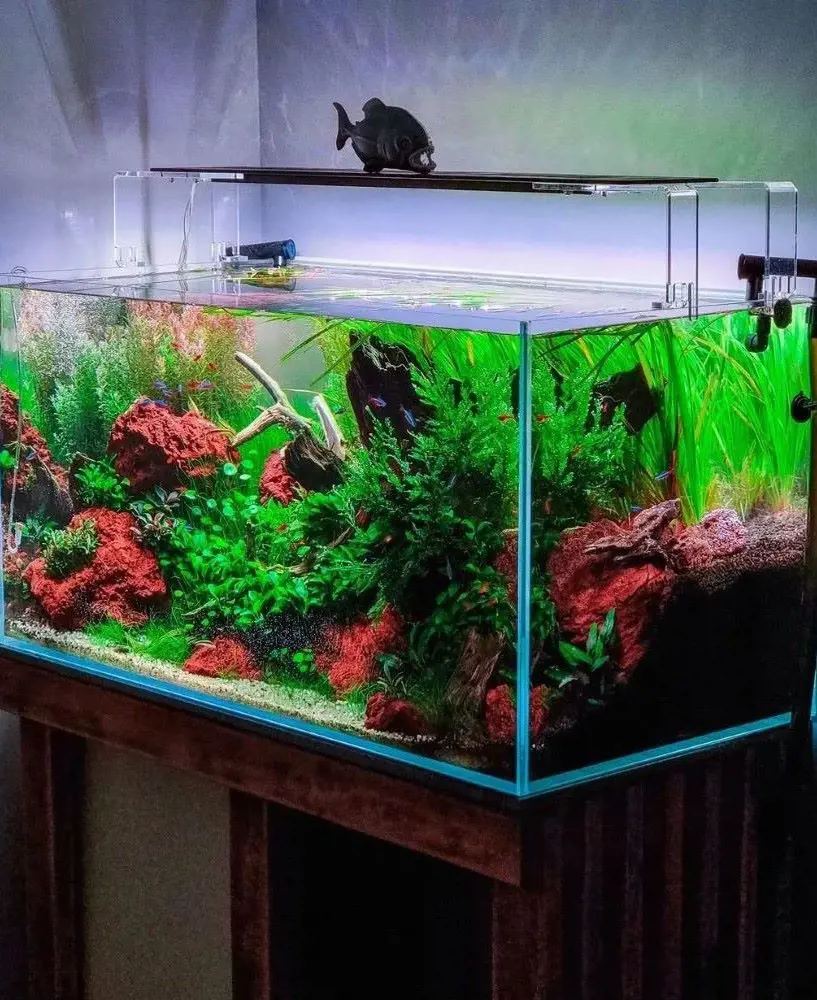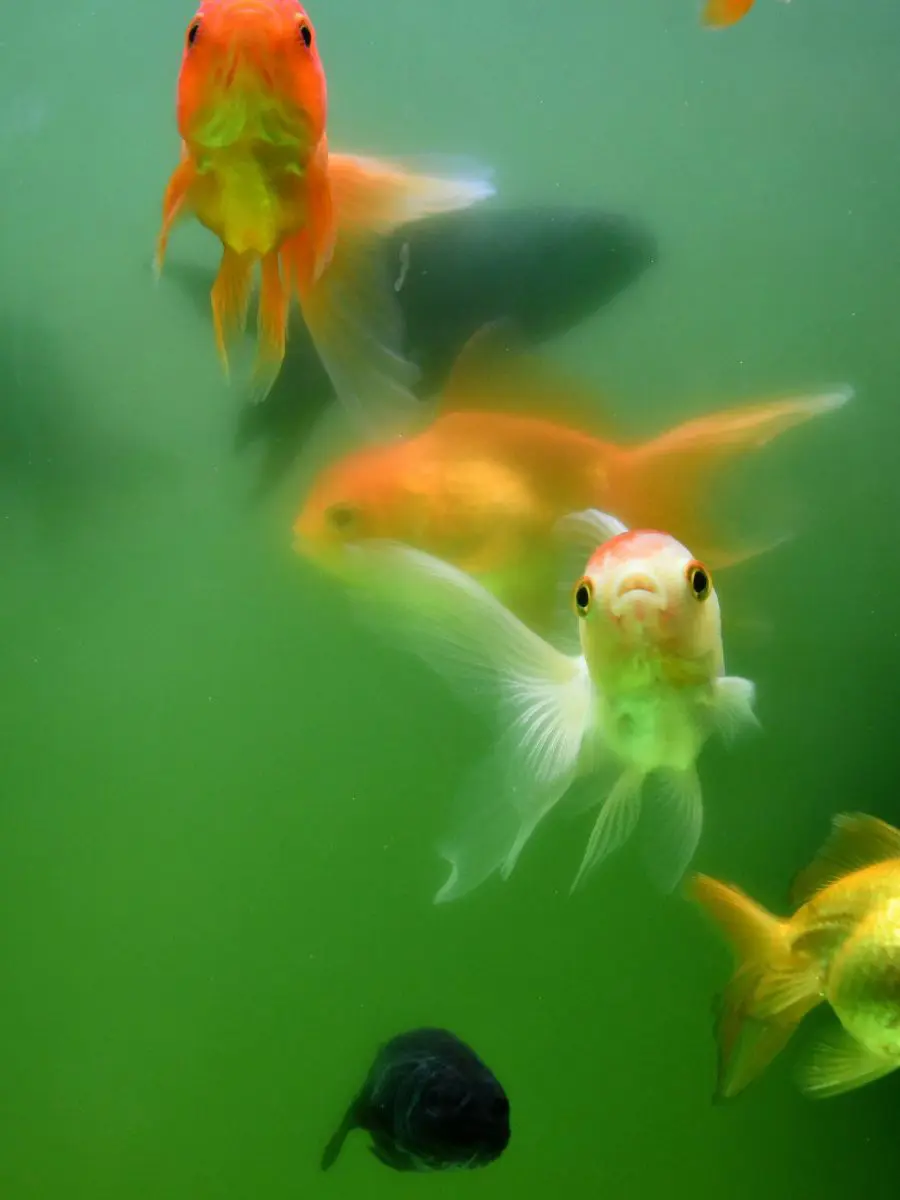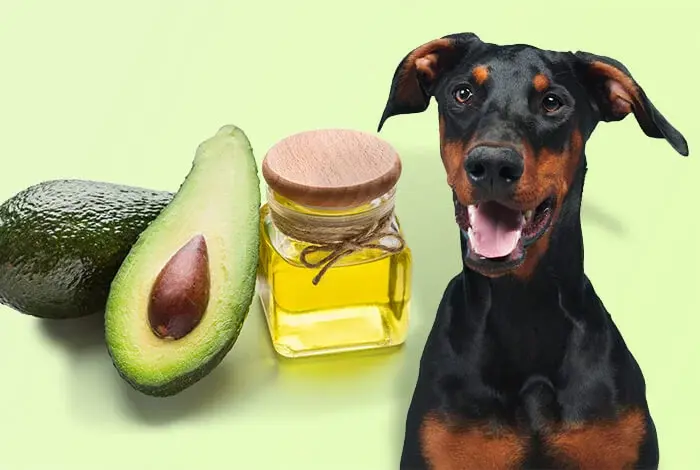20 Exquisite Koi Fish Types
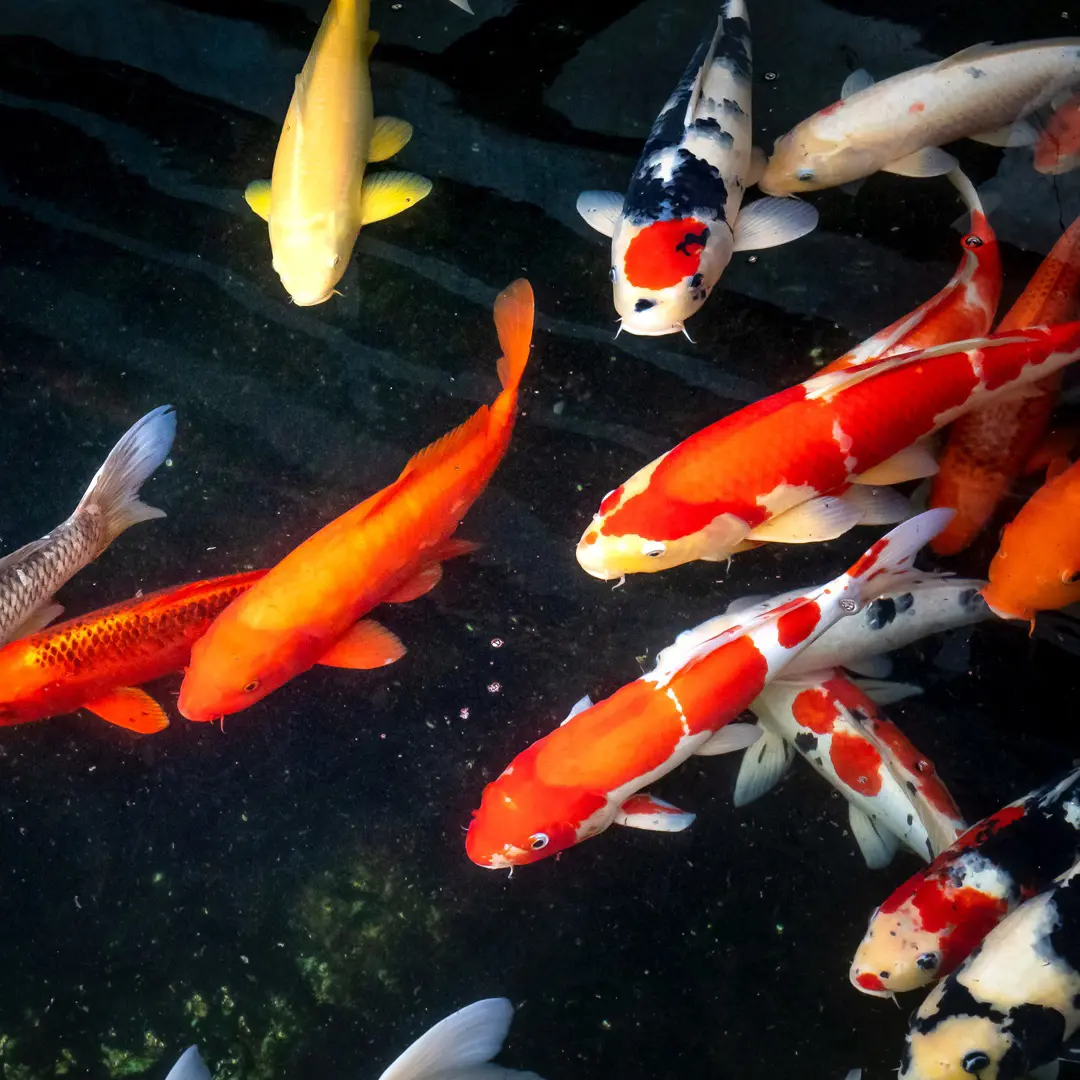
Won't you love the sight of colorful Koi fish gracefully swimming in the small pond in your backyard? There's something special about these low-maintenance fishes that makes them attractive.
People also like keeping koi because they're believed to bring good luck and positive vibes.
The Koi fish comes in a variety of colors ranging from bright reds, oranges, and blues, to whites. It's like having living rainbows swimming around in your pond. And it's not just plain colors – the patterns on their scales are like nature's artwork, making each koi unique and beautiful.
1. Hikarimono
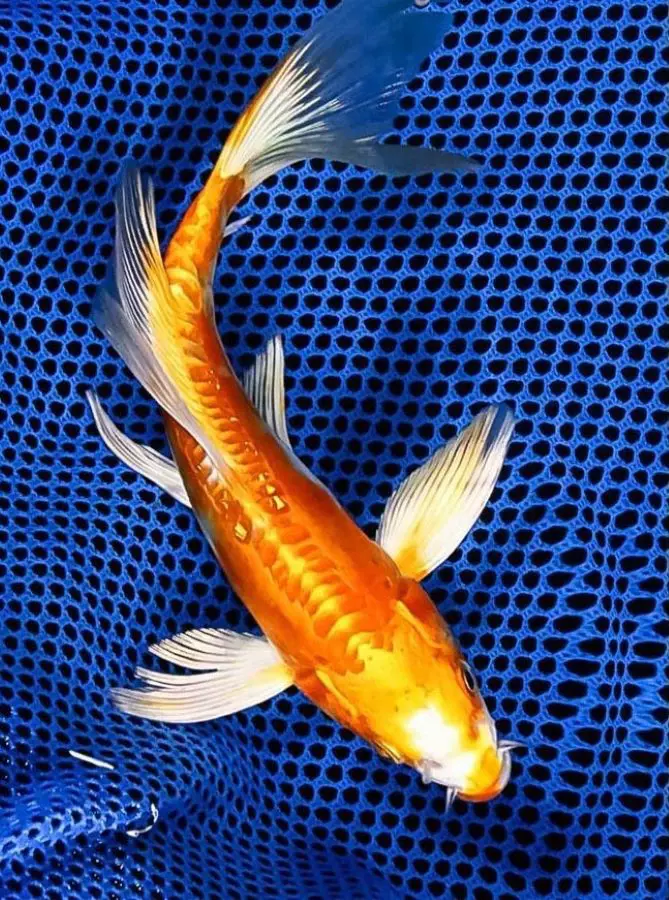
"Hikarimono" is a term in Japanese that refers to koi fish varieties with metallic or reflective scales. The word "hikari" translates to "light" or "shine," emphasizing the bright and reflective qualities of these koi.
The reflective quality of their metallic scales adds an extra layer of brilliance to the already vibrant colors of these koi. This category of fish includes further two types: Hikarimuji (single-colored metallic) and Hikarimoyo (multi-colored metallic).
2. Showa
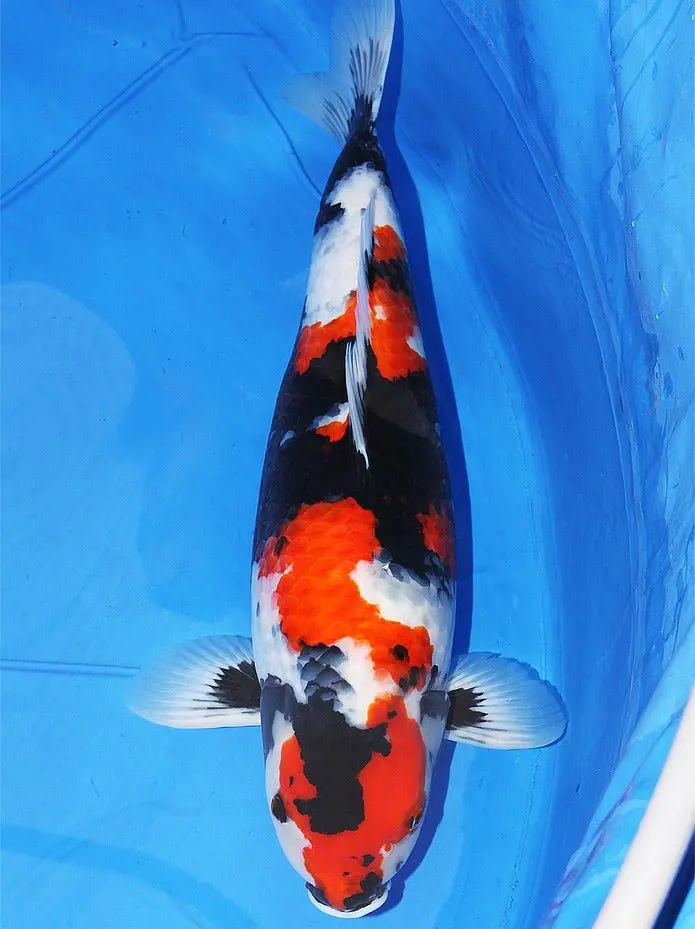
A Showa koi is a type of koi fish that is highly prized for its distinctive coloration. They are characterized by their three-color pattern, known as "sanshoku," which typically includes white, red, and black.
The black coloration often forms a bold and dominant pattern on the fish's body, with red markings and a white base.
Showa koi are sometimes referred to as "Showa Sanshoku" or simply "Showa," and they are one of the "Gosanke" varieties, along with Kohaku and Sanke. The Gosanke varieties are considered the three major classifications of koi in traditional Japanese fishkeeping.
3. Goshiki
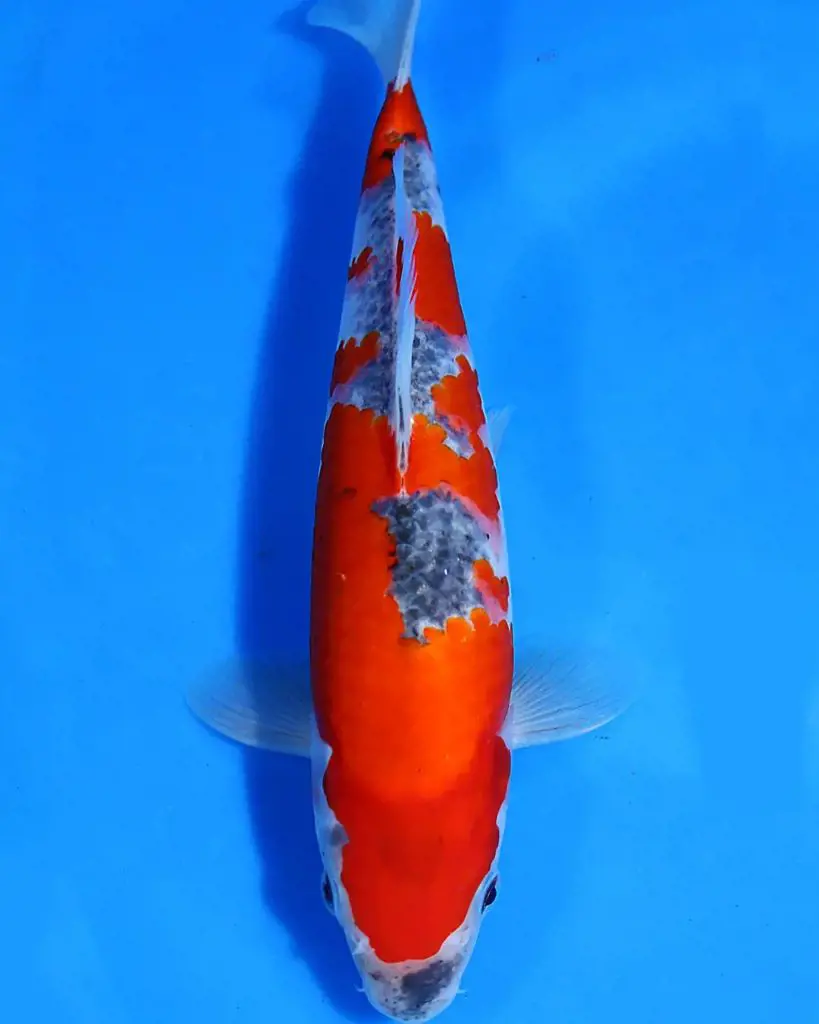
Goshiki is another captivating variety of koi, known for its unique and beautiful coloration. The name "Goshiki" translates to "five colors" in Japanese, reflecting the five distinct hues that can be present on these fish.
The primary colors of Goshiki koi include white, red, black, blue, and sometimes a touch of yellow or green.
Goshiki koi typically have a white base with red and black markings. They may look like Kohaku, but what sets them apart is the addition of blue and, occasionally, yellow or green patterns.
4. Doitsu Kujaku
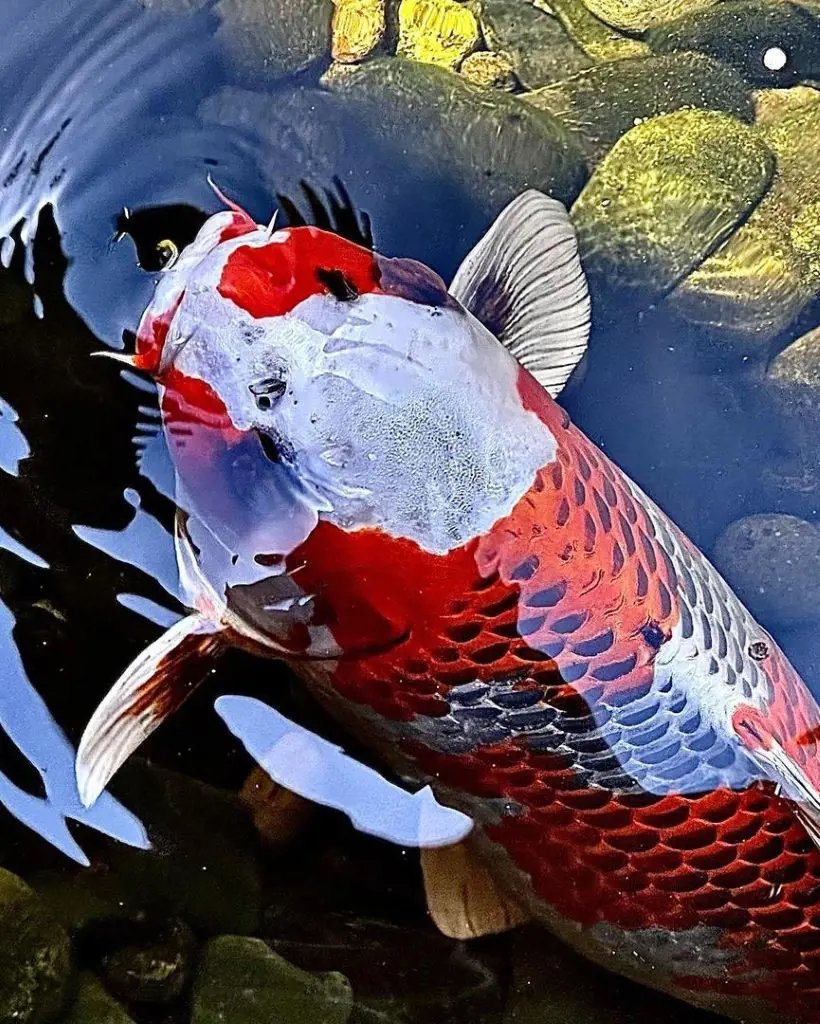
"Doitsu" refers to the type of scaling on the koi, characterized by large, mirror-like scales along the dorsal and lateral lines, while "Kujaku" means "peacock" in Japanese. The Doitsu Kujaku combines the Doitsu scaling with the attractive coloration of the Kujaku variety.
Kujaku, in general, has a metallic or ginrin (sparkling) base with a pattern of metallic or reflective scales on its back, resembling the pattern on a peacock's tail. The Doitsu Kujaku, therefore, showcases this pattern in a particularly pronounced and eye-catching way due to its unique scaling.
5. Kohaku Koi

The Kohaku is one of the most iconic and beloved varieties of koi, renowned for its simplicity, elegance, and vibrant coloration. The name "Kohaku" comes from two Japanese words: "Ko," meaning red, and "haku," meaning white.
The ideal Kohaku has bright, clean white skin without blemishes and bold, evenly distributed red patterns. A balanced and pleasing arrangement, along with a crisp, sharp demarcation between the red and white, is highly desirable pattern of red marking in Kohaku koi.
6. Benigoi
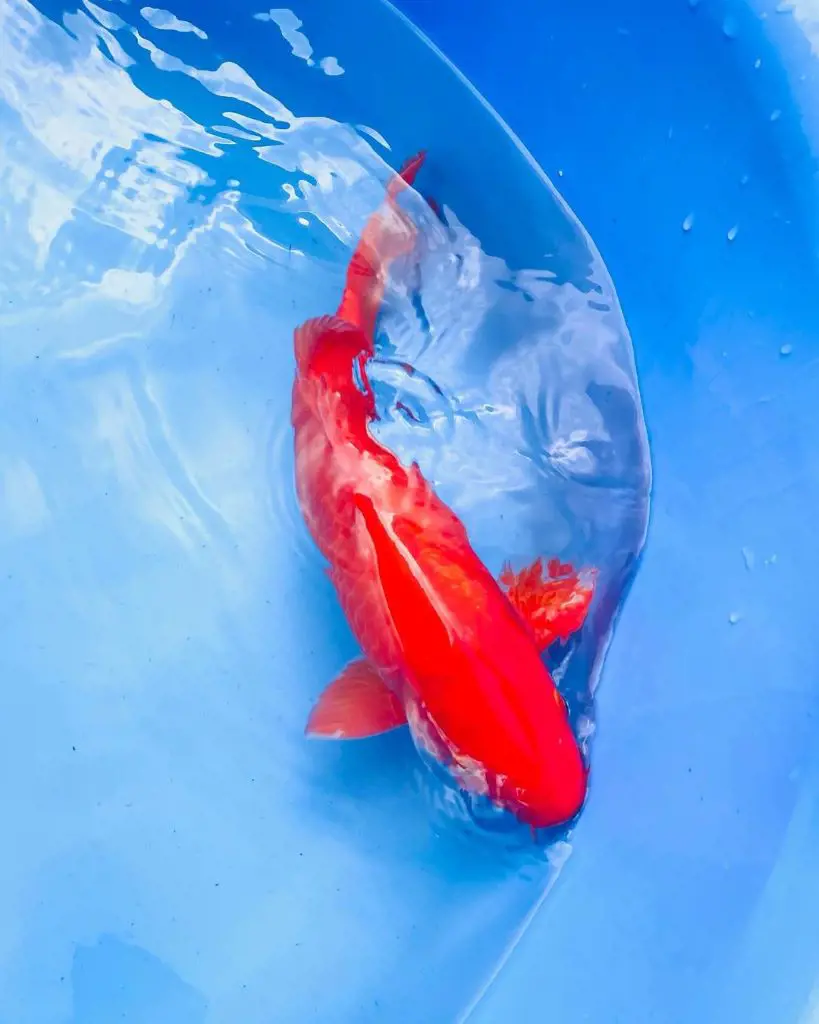
Benigoi is a specific variety of koi fish having primarily solid, intense red color. Unlike many other koi varieties that may have complex patterns, Benigoi is known for its lack of distinct patterns or markings. The emphasis is solely on the rich and uniform red coloration.
It can grow to be quite large, and its impressive size can enhance the visual impact of its solid red color. Benigoi typically have regular (non-metallic) scales and is often appreciated for the straightforward beauty it bring to the Koi pond.
7. Hirenaga
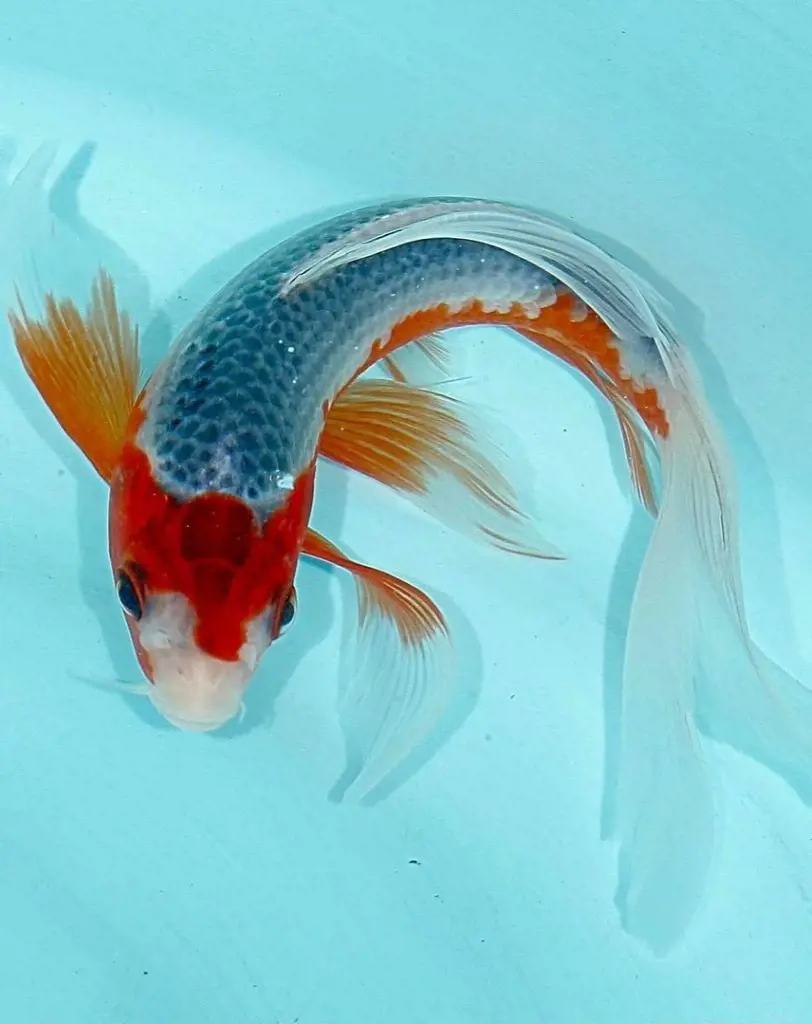
"Hirenaga" refers to a specific characteristic in koi fish, and it translates to "fin length" in Japanese. In the context of koi keeping, hirenaga typically describes koi with elongated or extended fins.
Many Koi varieties like Butterfly koi and other Koi hybrids may have this feature. The hirenaga trait adds a graceful and flowing element to the appearance of koi, giving them a more elegant and unique presence in a pond.
8. Kawarimono
"Kawarimono" is a term in the world of koi keeping that refers to a diverse group of koi varieties that don't fall into the standard classifications like Gosanke (Kohaku, Sanke, and Showa) or other recognized categories.
The word "kawarimono" itself translates to "unusual thing" or "strange thing" in Japanese.
Koi with Doitsu scaling (large, mirror-like scales) often fall under the kawarimono category. Ghost Koi or simply a hybrid variety resulting from the crossbreeding of metallic-skinned koi and wild carp also falls under this Koi type.
9. Kikokuryu
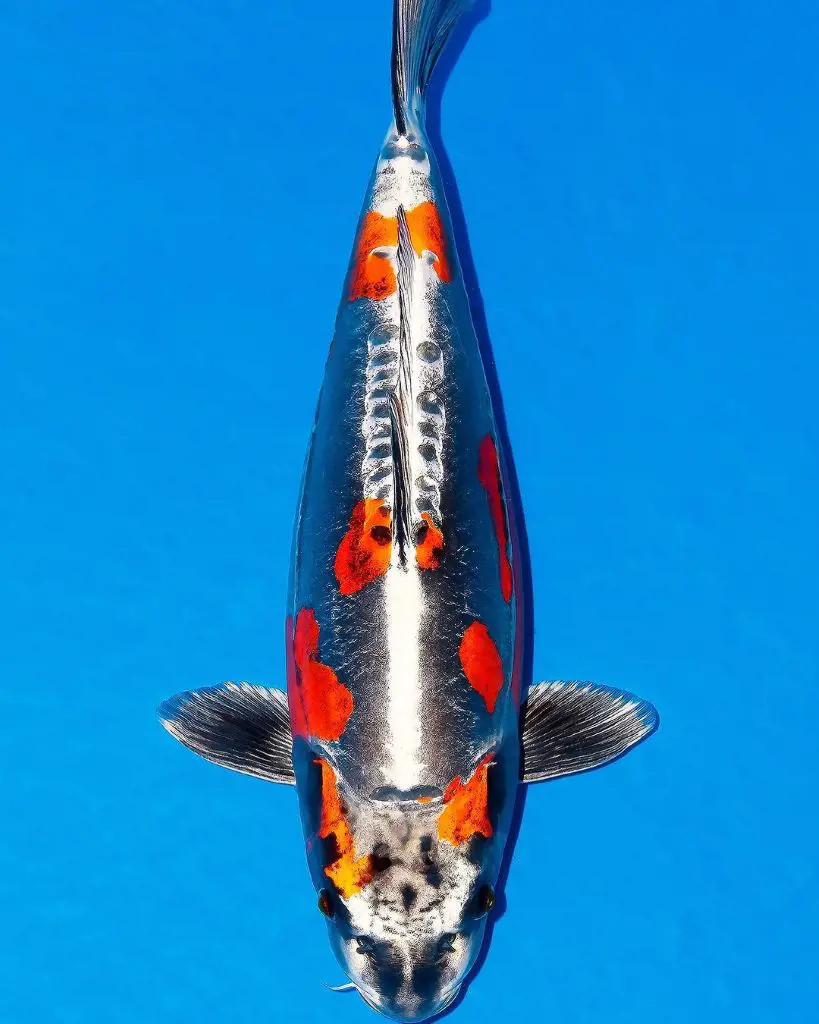
Kikokuryu is a variety of koi fish that originated in Japan. The name "Kikokuryu" is a combination of "Kikoku," meaning "autumn black," and "Ryu," meaning "dragon."
This variety is recognized for its metallic scales and its unique coloration, which often includes a mix of black, silver, and other metallic hues. The dominant color of Kikokuryu is usually black, and the metallic scales give it a reflective or shiny appearance.
Rather than the pattern, the emphasis is on the overall metallic coloration and the unique play of light on the scales.
10. Koromo
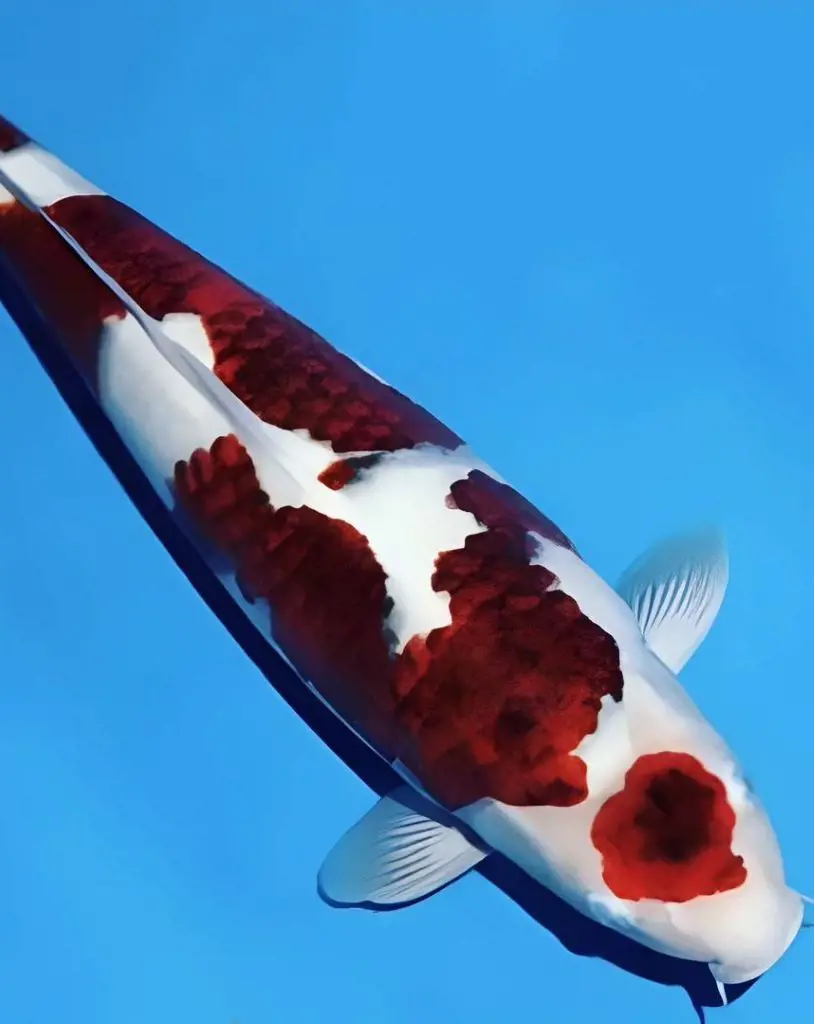
Koromo is a distinct variety of koi fish known for its net-like reticulation over a base color. The name "Koromo" translates to "robed" or "clothed" in Japanese, reflecting the appearance of the scales, which can resemble a patterned garment.
The base color of Koromo can vary and includes varieties such as Ai Goromo (blue), Budo Goromo (purple), and Sumi Goromo (black). The net pattern enhances the overall visual appeal.
Koromo often has a red (hi) pattern underneath the netting. The contrast between the red and the netting creates a visually striking effect.
11. Ogon

The name "Ogon" translates to "gold" in Japanese, and while gold is a common color for Ogon, it can also include other metallic shades such as platinum, silver, and orange. The defining characteristic of Ogon is its solid, metallic color that covers the entire body.
Ogon typically has regular (non-metallic) scales, and the metallic sheen gives the fish a bright and reflective appearance. The scales contribute to the overall luster of the fish. They can grow to be quite large and their impressive size makes them stand out in the pond.
12. Platinum Koi
Platinum Koi refers to a specific color variety of koi fish known for its stunning silver-white coloration, resembling the brilliance of the precious metal platinum. This variety is highly valued for its clean and reflective appearance.
The primary color of Platinum Koi is a shiny silver-white, giving it a lustrous and metallic appearance. The color is usually consistent and covers the entire body.
There are no intricate patterns in scales. Platinum Koi can come in various sizes, and their coloration is often more noticeable in larger individuals.
13. Sanke
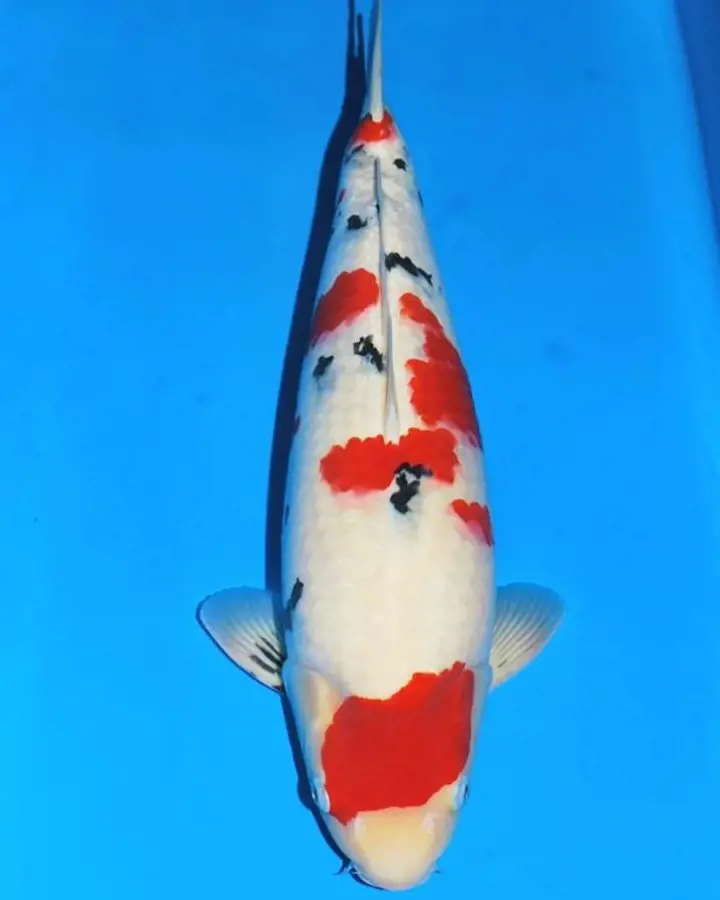
Sanke is another Koi type of the Gosanke varieties recognized for its three-color pattern, known as "sanshoku," which typically consists of white, red, and black markings. The primary color pattern of Sanke is a white base with red (hi) and black (sumi) markings.
The red markings on Sanke should be vibrant, evenly distributed, and have a clear and defined edge against the white background. The black markings, known as sumi, should be well-placed to enhance the overall visual appeal.
Too much or too little sumi can affect the quality of the Sanke. The challenge in breeding high-quality Sanke lies in achieving a balanced and harmonious distribution of these three colors.
14. Asagi
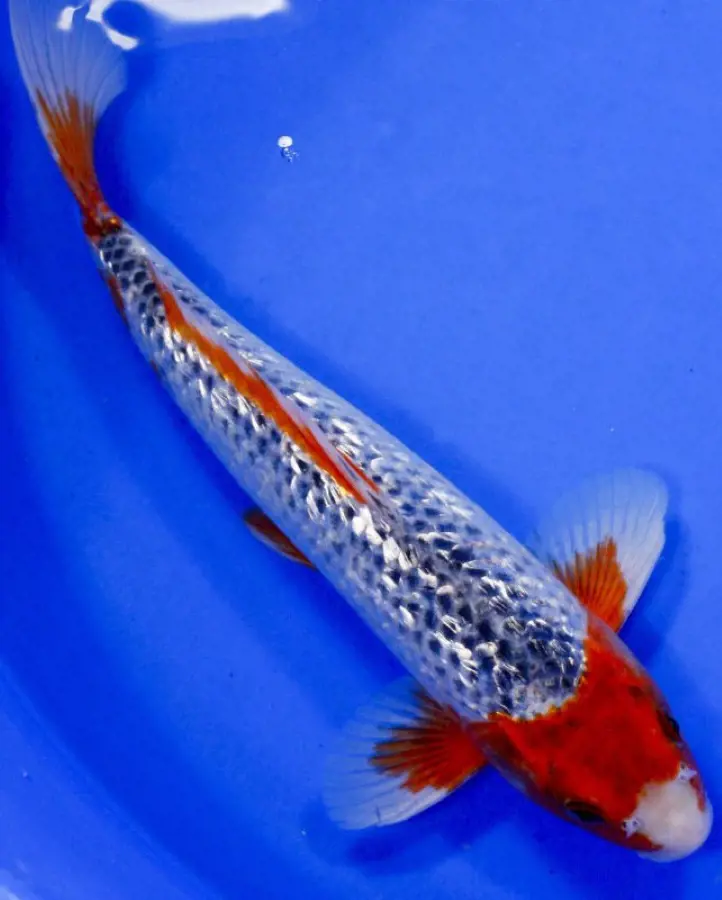
Asagi is a classic and well-established variety of koi that originated in Japan. It is known for its distinctive color pattern, characterized by a blue or indigo net-like pattern on the back and sides. Asagi is often considered one of the foundation varieties of koi, contributing to the development of other popular types.
Asagi traditionally has large scales along its dorsal (back) line, creating a net-like or reticulated pattern. The scales on the rest of the body are usually smaller, contributing to a smooth appearance. The primary color of the Asagi is a bluish-gray or indigo net pattern along the back and sides. The base color of the body can vary, with lighter shades being preferred.
15. Shusui

Developed in Japan, the Shusui is the scaleless (doitsu) version of the Asagi koi, which traditionally has scales only along its dorsal (back) line. The Shusui has a line of scales along its back, resembling a traditional Japanese blue koi called Asagi.
However, the rest of its body is typically scaleless, giving it a smooth and shiny appearance.
It often exhibits a blue net-like or reticulated pattern on its back, which is a characteristic inherited from the Asagi variety. The base color of the body can vary and is commonly white or pale blue.
Shusui may have red (hi) patterns on its sides, which can create a striking contrast with the blue net pattern and the lighter body color.
16. Utsuri
Utsuri is a group of koi varieties that are characterized by their bold, distinctive patterns of black and white. The name "Utsuri" translates to "reflection" or "reflection of a mirror" in Japanese, emphasizing the stark contrast between the black and white markings.
There are several Utsuri varieties, with the three most recognized being Shiro Utsuri, Hi Utsuri, and Ki Utsuri. Shiro features a black body with white markings, Hi features a black body with red (hi) markings, and Ki Utsuri displays a black body with yellow (ki) markings.
They typically have non-metallic scales, contributing to the matte appearance of the black color.
17. Bekko
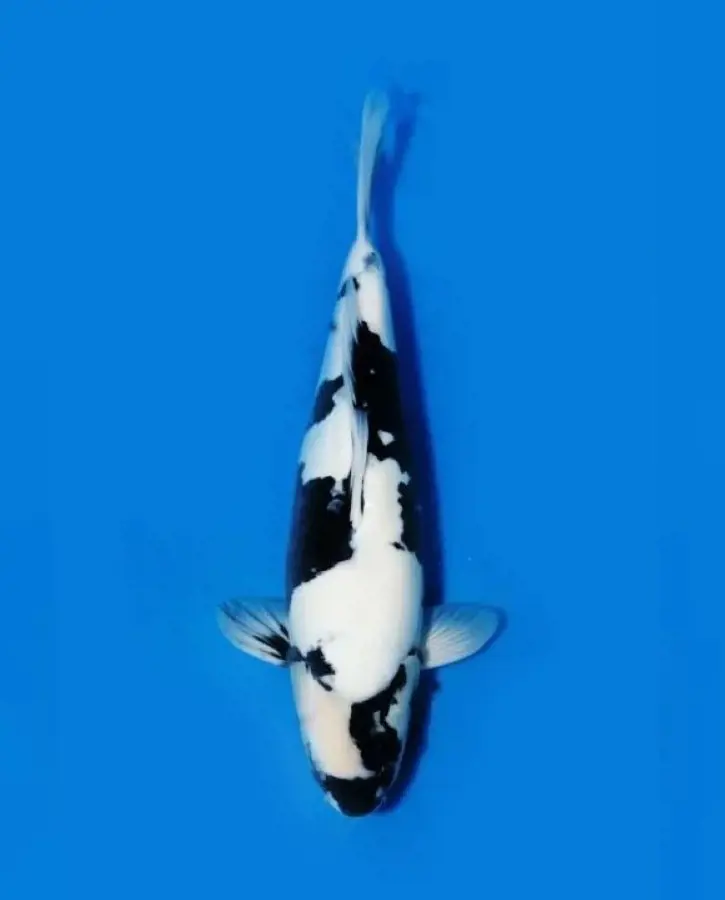
Bekko is a variety of koi fish featuring a solid base color with sumi (black) markings. The name "Bekko" means "tortoise shell" in Japanese, which is a fitting description for the pattern on these koi. The base color can be white (Shiro Bekko), red (Aka Bekko), or yellow (Ki Bekko).
The sumi is often distributed in a unique and appealing manner, resembling the pattern on a tortoise shell. Unlike Utsuri varieties, Bekko usually have fewer and larger sumi markings. The simplicity of the pattern contributes to the overall elegance of the fish.
18. Tanchō
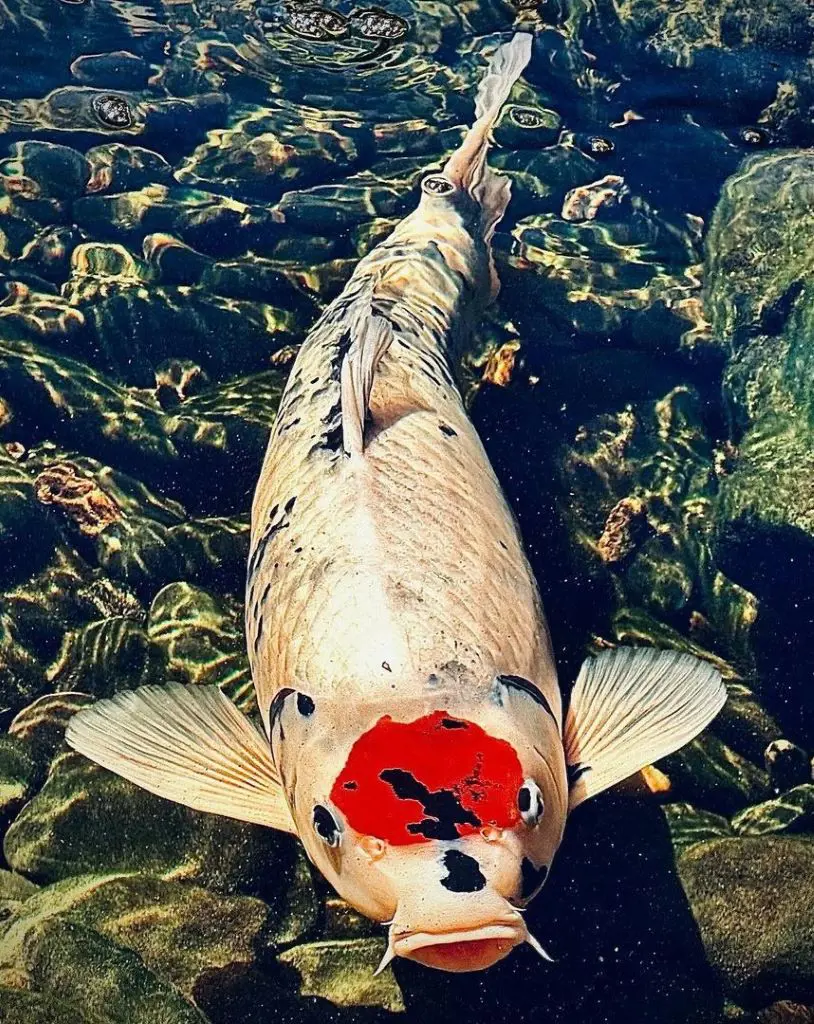
The name "Tanchō" translates to "red cap" in Japanese, which aptly describes the defining feature of this koi. Tanchō koi are primarily white, and the defining characteristic is a vivid and well-defined red pattern on the head. The red is often in the shape of a cap or hood, covering the top of the fish's head.
While the body is mostly white, Tanchō may have additional red markings on the body, but the emphasis is on the red cap. The red pattern is typically symmetrical and sharply contrasted against the white background.
19. Butterfly Koi
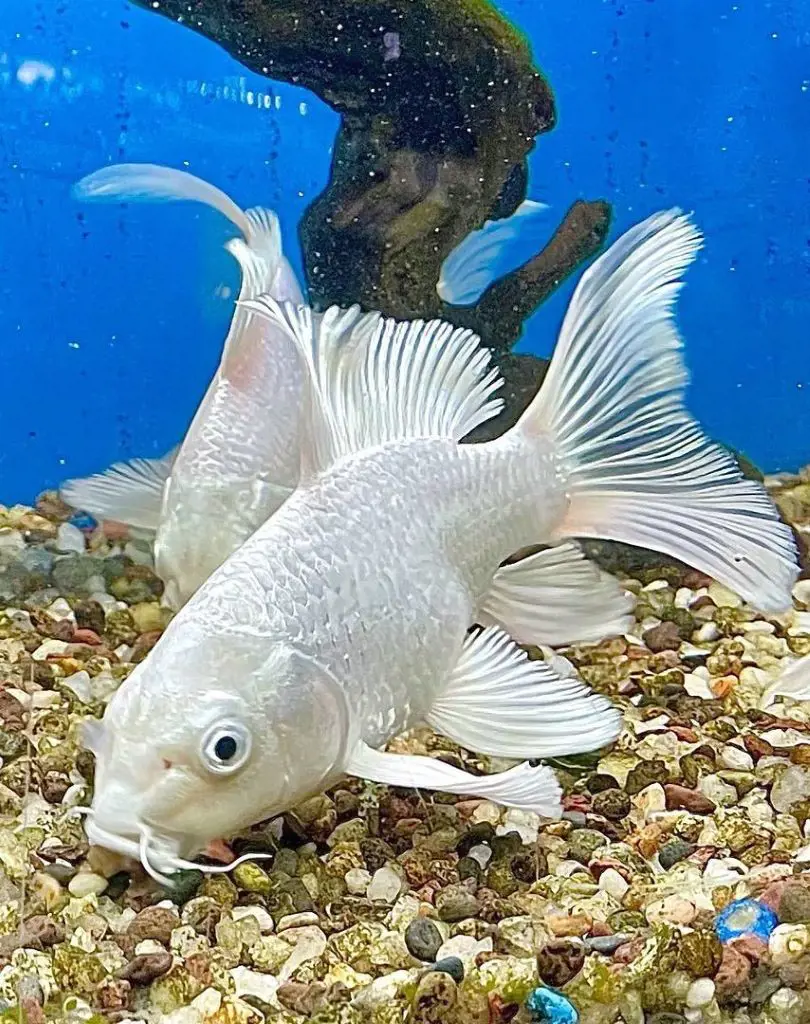
Butterfly Koi, also known as "longfin koi" or "dragon carp," is a captivating and distinctive variety of koi fish. The most prominent characteristic of this Hiregana type fish is their elongated, flowing fins. These fins can extend well beyond the tail, resembling the graceful wings of a butterfly.
Butterfly Koi are admired for their graceful and flowing fins, which add a dynamic and ethereal quality to a koi collection. They come in a wide range of colors, similar to other koi varieties. Common colors include red, orange, yellow, white, and a combination of these hues.
20. Chagoi

Chagoi is a specific variety of koi fish known for its unique coloration, friendly demeanor, and rapid growth. "Chagoi" is a Japanese term that translates to "tea-colored" or "brown," reflecting the earthy tones often found in this koi variety.
Chagoi typically has a range of earthy colors, including various shades of brown, green, or olive. The coloration can resemble the hues found in tea, hence the name. They are often comfortable being hand-fed and can become quite interactive with their keepers.
Top Lists

